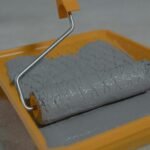Managing sound distractions is essential for productivity and comfort. Thankfully, acoustic ceiling tiles are known for their sound reduction properties, but do you know how they actually work? You may not be interested in knowing the science behind it, but understanding how acoustic ceiling tiles work can help you in many ways. When you know how they work, you can better choose or upgrade the material based on your specific needs, and you can also optimize their performance.
But how?
Don’t overwhelm yourself, we are here with a complete guide to help you understand how acoustic ceiling tiles work to make your choice easier and simpler. We will walk you through the types of sounds they affect, different materials, and performance ratings to completely unravel the science behind acoustic ceiling tiles. So, let’s begin!
Why Sound Becomes a Distraction Indoors?
If you want to solve something, you must understand the problem first before jumping into any solution. The problem we are facing is distracting sounds. In enclosed offices, schools, or restaurants, we have hard surfaces on walls, ceilings, and floors. Sound reflects on these hard surfaces and bounces back, creating echo, reverberation, and noise buildup.
All this noise is pretty distracting and may hinder productivity or ambience. You may encounter unclear speech due to echo, lack of privacy, and even discomfort for your employees and clients. Acoustic ceiling tiles can help you get rid of all these issues by reducing distracting noise from any space.
How Acoustic Tiles Work to Reduce Sound Distractions?
There are two core mechanisms in acoustic ceiling tiles that reduce sound. These mechanisms are sound absorption and sound blocking. Let’s have a closer look at both to understand the science behind them.
- Sound Absorption
Some acoustic ceiling tiles are made of porous material. When sound waves hit these porous surfaces, a part of their energy gets absorbed in the tiny pores of the tiles instead of bouncing back in the room, which successfully reduces reverberation and echo. This mechanism turns sound waves into heat by trapping those waves in microscopic pores.
- Sound Blocking
Some tiles are used along with insulation to block sound from traveling through walls or the ceiling into different rooms. These tiles are generally denser and are combined with different materials as insulation or a barrier.
How to Measure the Performance of Acoustic Ceiling Tiles?
Acoustic ceiling tiles are measured by three basic metrics by industry professionals. These metrics show the performance ratings.
- Noise Reduction Coefficient (NRC): It’s the average rating of how much sound is absorbed by the material. The metrics range from 0.0 to 1.0. For instance, 0.8 NRC means the material can absorbb 80% of sound waves.
- Ceiling Attenuation Class (CAC): The next is the ability to block sounds from travelling in adjacent rooms through the ceiling. The higher the rating, the better it will block sound.
- Sound Transmission Class (STC): This metric is used less on ceiling tiles alone. Mostly professionals use this metric to measure the sound-blocking capacity of building elements. Hence, it can be relevant when ceiling tiles are part of a larger system.
Different Materials of Acoustic Ceiling Tiles and How They Work
Acoustic ceiling tiles are made of different materials. Each material has its own characteristics for visual appeal, functionality, and overall performance. The table below has some of the most common materials used for acoustic ceiling tiles:
| Material | Characteristics | Best For |
| Mineral Fiber | They are highly affordable with moderate absorption and fire-resistance | General offices, schools |
| Fiberglass | High NRC, lightweight | Recording studios, conference rooms |
| Foam | High NRC, great for focused absorption | Home theaters, restaurants |
| Perforated Metal with Backing | They are stylish and durable, with sound-absorbing core | Airports, lobbies, luxury commercial spaces |
Each material is unique with its own pros and cons. You can choose the material based on your specific needs of durability, visual appeal, moisture resistance, and much more.
Signs When You Need Acoustic Ceiling Tiles
Not all spaces need acoustic ceiling tiles, but there are signs wjen you should consider them to enhance your workflow and comfort. Here are some coomon signs that direct you to consider scoustic ceiling tiles:
- If you are noticing echo during speech
- When conversations carry from room to room
- If you are getting noise complaints from guests or employees
- You want to improve privacy of your space
- You want to reduce distractions to boost productivity
- Your building compliance need acoustic regulations of LEED criteria
How to Choose the Right Acoustic Ceiling Tiles?
Different spaces require different types of ceiling for various reasons. Here is a quick guide to select the right type of acoustic ceiling tiles for better and more optimized performance:
- Choose an acoustic tile with high NRC for open spaces, preferably above 0.7.
- Look for high CAC ratings, preferably above 35 for shared spaces or adjacent rooms
- Find the best options from perforated metal or wood fiber tiles for design forward spaces
- Choose tiles made of recycled or renewable material if you want a sustainable option
Final Thoughts
Understanding the science behind acoustic ceiling tiles is essential for making the best choice that works perfectly with your needs. It would enhance your comfort, productivity, and appearance as well. Moreover, choosing the right acoustic tiles can also help you maintain building compliance. All this is only possible when you know how acoustic ceiling tiles work.
Acoustic ceiling tiles are the perfect solution to turn noisy spaces into calm and peaceful environments by absorbing and blocking unwanted sounds. Investing in acoustic ceiling tiles is the right choice, but before that, make sure you are choosing the right one so you won’t regret it later.






